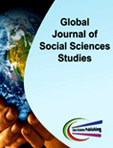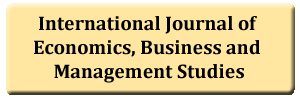An Historical Trajectory of the Economic Transformation of the Southern Keiyo Community in Kenya
DOI:
https://doi.org/10.20448/807.4.2.52.69Keywords:
Keiyo, Trajectory, Transformation, Economic, Eco-ZonesAbstract
The paper examines economic opportunities and differentiation among the agro-pastoral households in Southern Keiyo in three ecological zones (the highland, escarpment and the valley). The basic assertation of study is that socio-economic processes in these areas are the product of inter-relationships of history, environment and culture. The goal of the people across the three zones is better living standards. At the community level, this will be reflected in roads, schools, hospitals and at the household level, in entrepreneurial activities, salaried employment and in the education of their children. Diversification of economic activities is the most common strategy employed in pursuing development. Apart from growing of crops and keeping animals for consumption and sale, the people also engage in off-farm activities, for example working for wages, running retail shops and performing casual labour. A theoretical construct has been employed to analyze and interpret the interaction that occurred between the environment, colonial and post colonial states on the one hand, and the response of agro-pastoral households in Southern Keiyo on the other. This is Talbott’s principal themes of innovation, diversification, adaptation and commercialization. The main argument is that diversification reduces risk and uncertainty, and thus can be the most rational economic path to choose. But the ability to diversify is neither equal among people of the same ecological zone, nor is it comparable across ecological zones because of social differentiation. History and environment have combined to create a much more favourable economic opportunity structure in the highlands. Unlike the rocky escarpment, the highlands receive more rainfall and have more moderate temperatures than the hot and dry Kerio valley. Therefore, the highlands are especially well suited for production of crops and livestock. The British colonial administration recognized these differences in agricultural potential and this affected their policies. Consequently, the highlands became the focus of most colonial development efforts, pattern that continued after independence both through government policy and the initiative of some people trying to achieve development. Although a few people on the escarpment and in the valley are able to progress, people in the highlands generally enjoy the most secure life. It is therefore, argued that contemporary socio-economic processes can neither be explained by a single variable, nor in synchronic perspective; instead they result from a dynamic combination of historical, environmental and cultural variables.





